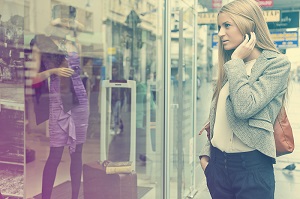More and more of us want to express individuality through the products and services we buy and the busier we get the more we would like brands and retailers to know our needs instantly.
Websites are becoming more customer centric – displaying content based on individual tastes and browsing behaviour.
It is also nice that you can walk into a Monsoon store and the shop assistant can give you recommendations based on what you bought online. It feels integrated and makes life easier.
What if it went a step further – what if the mannequins or shelves in store recognise your face and alert staff that you have arrived? What if the mannequin could determine your gender and age to alter the promotional messages and product displays in-store to suit? This technology has already arrived. Tesco for example uses it in its petrol stations to determine shopper demographics in order to market relevant on-screen ads.
Facial recognition is often seen as creepy by shoppers and the idea of being watched when you believe you are not does not sit easy with many of us. As much as we like tailor-made offers, privacy is also of high value.
The key elements that will make personalisation work (rather than put shoppers off) are:
- Transparency: tell customers how their data is being used
- Clear benefits: give customers something they really want in return
- Allow opt out: give those who don’t want this level of personalisation another option
Brands have to tread carefully on the tightrope between personalisation and intrusion into private space.
